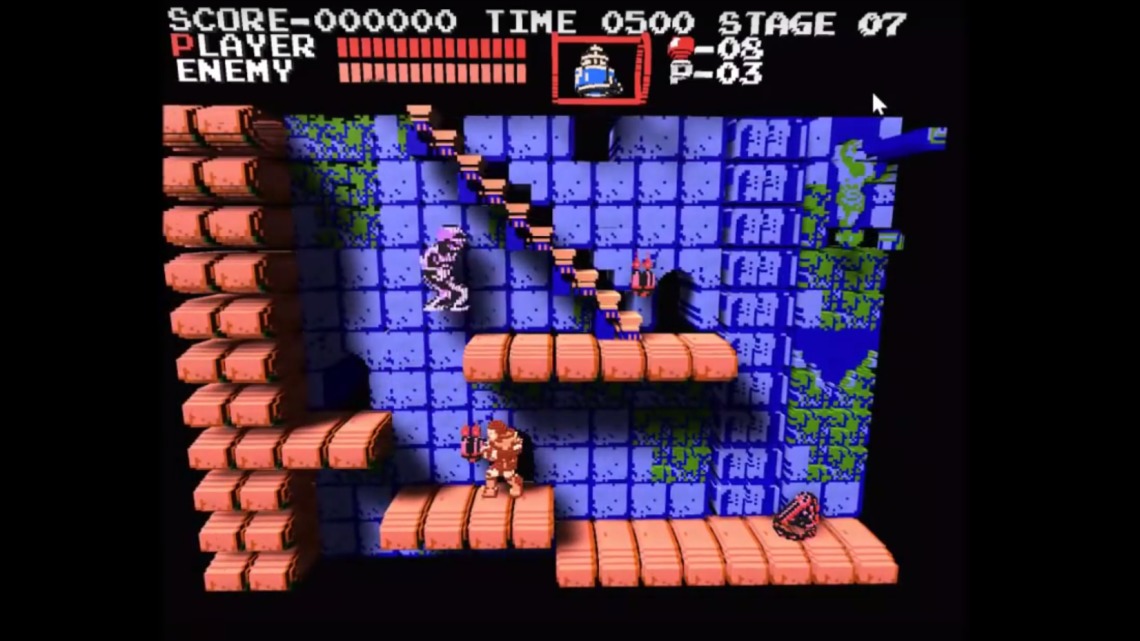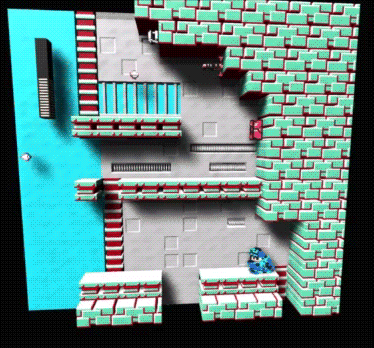How does the 3D emulator of 8-bit NES games work?

Back in March, one of the reviewers of the resource Kotaku discovered the browser beta version of the NES emulator . This emulator is able to turn "flat" 8-bit games into three-dimensional. As reported, this JavaScript emulator was written. It works in the Firefox browser. The program can add shadows and horizontal surfaces to vertical ones. "Three-dimensional" emulator works with images of games (ROM) - just like regular emulators.
Now came the final version of the program as an application under Windows. The developers have postedfree and paid ($ 4.99) version of the application. Apparently, the creators of the software are counting on lovers of classic NES games, ready to part with $ 30 in exchange for new sensations when playing the well-known Duck Tales, Super Mario Bros. or Mega Man. The other day, the creators of the emulator clarified the principle of its work and showed how to configure a number of game elements, if the emulator algorithm does not cope with any game on its own.

The main component of the new emulator is an algorithm that automatically determines the form of the graphic elements of the loaded games. The program tries to group individual sprites of game characters and background landscape into basic 3D objects (mainly cubes and cylinders). In addition, the algorithm analyzes how three-dimensional elements should be displayed on the screen, taking into account the depth and size of each object and the overall layout of the elements on the screen.
For many old games, including Super Mario Bros. and Tetris, this process is almost perfect, no additional settings are needed. Any frame with the game can be rotated or enlarged / reduced. It looks particularly interesting in Tetris. With some game characters or background objects in these two games, incidents happen when their outlines blur or turn into something difficult to recognize. But this rarely happens.
If the game does not give in to the algorithm, then additional configuration is already required. The developers of the emulator have provided such an opportunity. Configure, however, have every screen of the game. You need to click the mouse anywhere on the screen, and adjust the 3D characteristics of the objects. You can transfer objects from the foreground to the back, change their size and scale, change the operation of the algorithm itself (for example, indicate the need to transfer a 2D object into groups of volumetric cylinders, not cubes).
The advantage of the emulator is that setting one element will automatically lead to the replacement of its appearance in any moment of the game. That is, if you change the outlines of the same Mario, he will run in the current form through all the other levels. Settings can be saved to a file. This file can then be used the next time you download the same image of the game or share it on the Web for other players.
The downside is significant time and labor costs - yet working with graphics is not a matter of a couple of minutes. Changing each subsequent frame is a dubious pleasure if you are not a perfectionist with a commitment to the routine work. But in some games you can not do without additional configuration. This applies to Super C, as well as Chip and Dale's Rescue Rangers, Castlevania and several other games. Without additional settings, you will not be able to play these toys.
Virtually all NES-games can be configured to play with an emulator, except for those that were already voluminous (meaning pseudo-3D). These are Super Dodge Ball and Teenage Mutant Ninja Turtles 2: The Arcade Game. They can not be set up for a normal game in a 3D emulator. Whatever settings are used, the characters look very strange, often turning into a part of the background. Similar problems arise when trying to load games with isometric levels, like RC Pro-Am. They will also be impossible to play.
Nevertheless, a huge number of two-dimensional games is still compatible with the emulator. And if you consider that NES games are very many, then a gamer can get many hours of pleasant games in old, studied toys far and wide. I would like to hope either for a reduction in the price of the emulator, or for its translation into a free-to-play model. The emulator can work with rather old PCs and laptops without problems.
Opportunities
- The transformation of the old two-dimensional games in the bulk;
- Explore the possibilities of 3D technology;
- Play with any resolution that supports a PC or laptop, in full screen or windowed mode;
- Mono or stereo;
- Change the graphics settings of the games;
- Ability to save settings;
- The ability to share saved settings with the whole community.
System requirements
- Processor: Core M;
- Resolution: FullHD.
